Updated, May 29th with a table, also confirming the name!
For years, I’ve called it banga stick or oburunbebe, as learned from the interwebs. All attempts to find the botanical name drawing blanks. But researchers stay researching – once one, always and forever one. Some skills to being a good researcher are:
Observation: when you notice the details, differentiators, differences, you can ask the right questions to get answers you need.
Enquiry: your mode of enquiry must include traditional sources but also different ways to frame the question which might allow for a wider pool of information – thus answers.
I’ve applied a combination of both observation and panning through research papers and my book of herbs and spices and finally, finally, finally, the mystery of one of two spices/ roots whose names I couldn’t decode hitherto is solved, in part.
I’m beyond happy. And no, I don’t like liquorice – I’m excited about the knowledge I’m building about Nigerian cuisine, which could be transferred beyond our borders.
The Banga stick, known locally by that name but also by oburunbebe, osumada (by the Ika people) stick is a woody stick with striated bark. It is often used whole or ground into a powder and added to pots of Banga, palm nut soup.
I first came across the botanical name a couple of weeks ago.
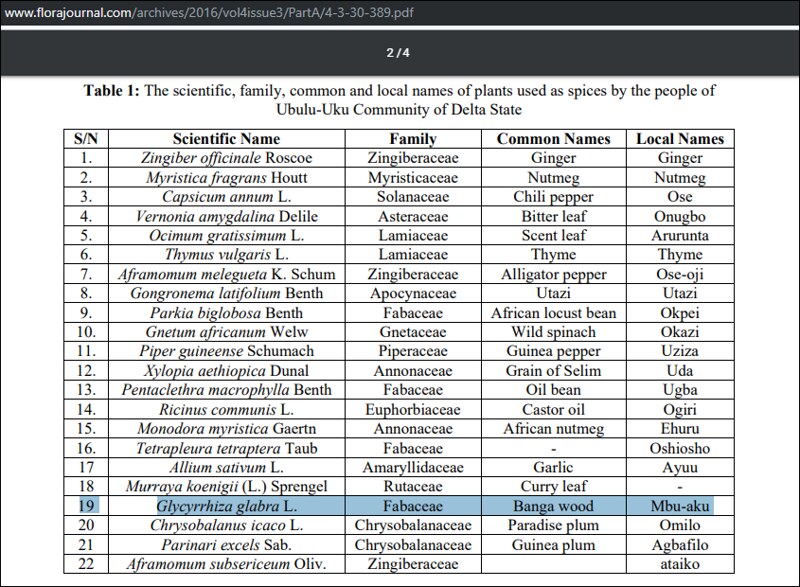
At first, I wasn’t convinced it was liquorice because I didn’t see photos that looked like what I had at home.
And then, one evening, I get out my book of herbs and spices, purchased a few years ago and never used.
I begin to thumb through the pages, hopeful and when I happen upon the page, page 303, I know I’m home.
First of all, the sticks look like those in my kitchen and the botanical name: glycyrrhiza glabra is the same as I discovered yesterday. And then the sensory exploration begins.
At first sniff, there is no discernible scent/ aroma/ smell beyond musty… and now I understand why. Aromas are often the result of essential oils in fruit skins, stems, leaves. To preserve the aroma, ‘scented’ herbs and spices should be stored properly – in airtight containers, whether sealed bags or jars. In Nigeria, however, the sticks are often found bundled together with rubber bands in baskets on store shelves, exposed to the world. So, one outcome of this discovery will be advising as many stores as I can how best to store the sticks. Any ideas? Let me know.
On to the next – the taste. I bit off one end of the hardy sticks and got a slight aniseed flavour on my tongue. After living for 4 years in The Netherlands, I know liquorice. I know the sweet, the salty and the double salty. This is definitely liquorice.
It’s so amazing how having a reference aids identification.
After 4 years.
So, here are some facts:
Name: Dutch – zoethout, meaning sweet wood
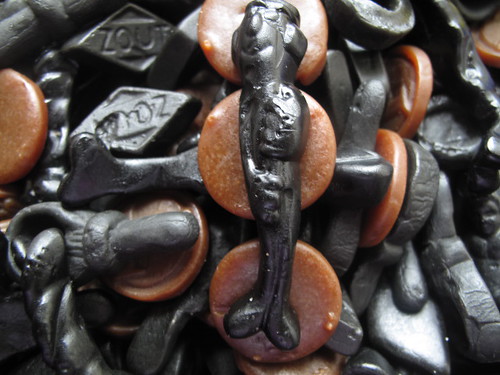
Nigerian names: Previously, I noted this as Ewe omisinmisin, Yoruba based on some research but this appears to be incorrect – I cannot find the actual name. I’ll keep researching and will update accordingly; Jan 2024]
Provenance/ Origin: Middle East and South-east Europe and apparently, Nigeria…
‘A member of the pea and bean family (Leguminosae/Fabaceae), Glycyrrhiza glabra is best known for its use in making liquorice-flavoured confectionery. Its scientific name is taken from the Greek for sweet root (glykys, meaning sweet, and rhiza, meaning root). It is cultivated for its rhizomes (underground stems) that contain the compound glycyrrhizin, which is 50 times sweeter than sugar.’; Source
Uses: in Nigeria, for Banga soup; and as a chewing stick/ natural toothbrush; elsewhere in Europe and America, for confectionery; also a core ingredient in Guinness and the Italian liqueur, sambuco.
Storage: store in an airtight container
Interesting facts: Effective in dealing with/ killing bacteria that could lead to tooth decay and gum disease
Beware: if you have high blood pressure/ are hypertensive, beware – the glycyrrhizic acid could lead to elevated blood pressure
So how did it become an ingredient in Banga soup? I don’t know but there’s a lot we’ve inherited that makes so much sense. Perhaps it was understood to be a preservative, or its notated digestive properties were recognised. Or the immune booster, antibacterial, anti-fungal properties.
Mystery finally solved and I’m beyond chuffed. I can’t wait as we continue to unravel the hidden wonders and knowledge of our cuisine.
Peace, love & spice.

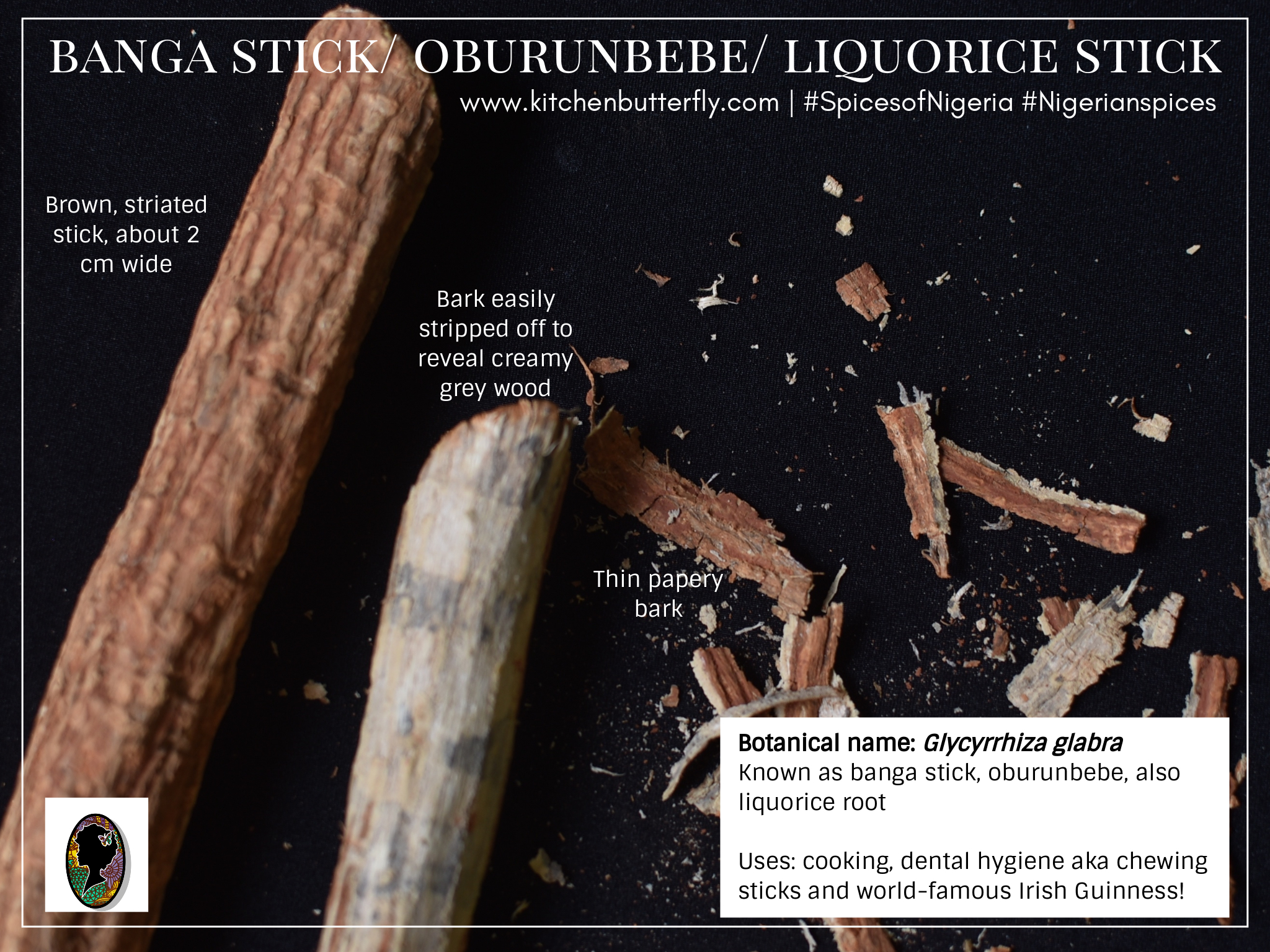
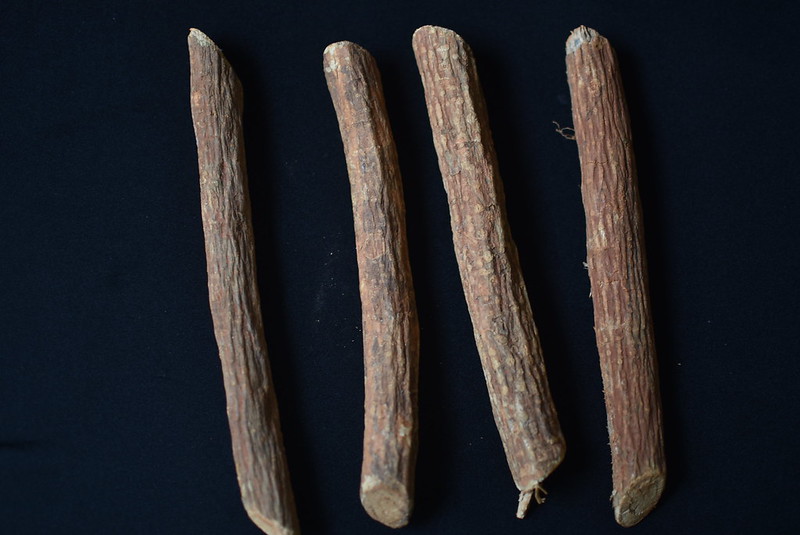
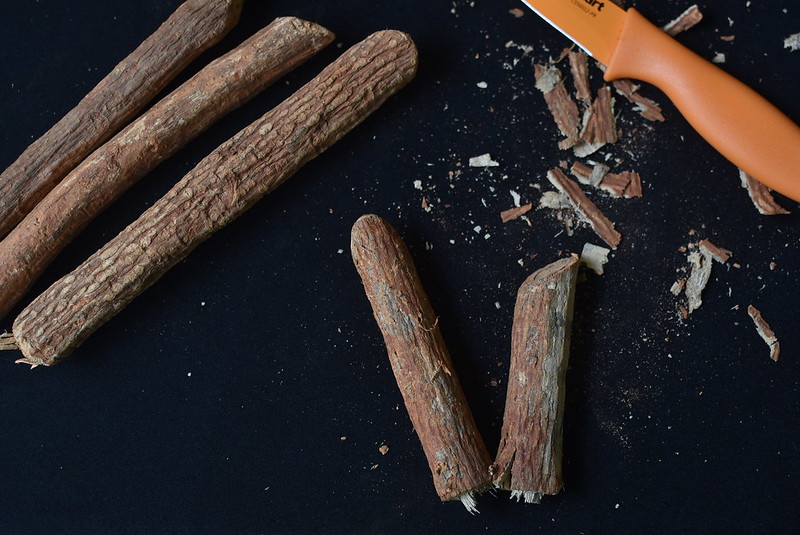
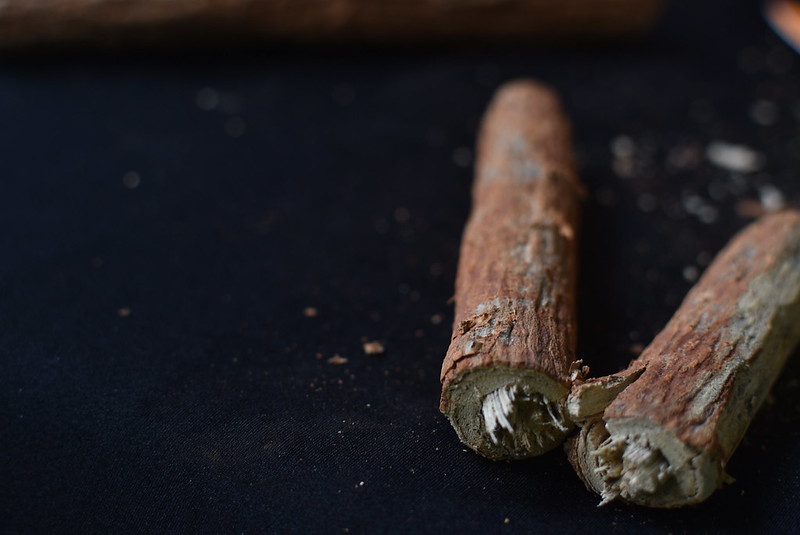
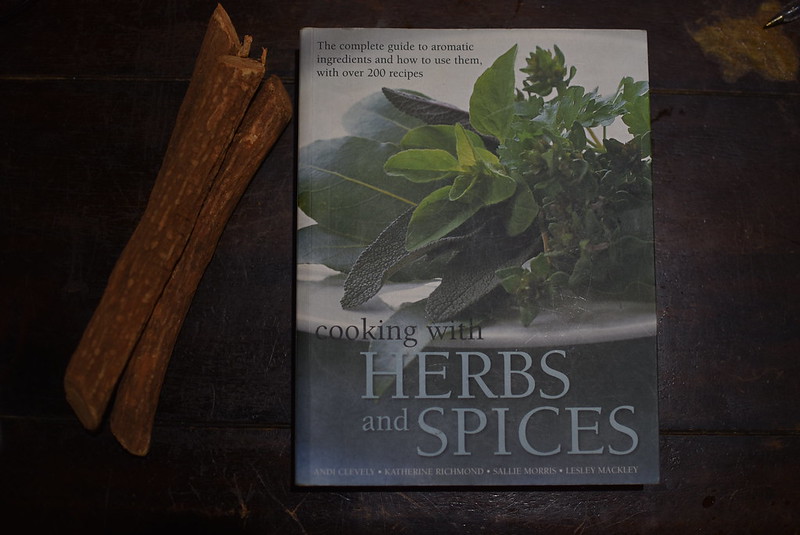
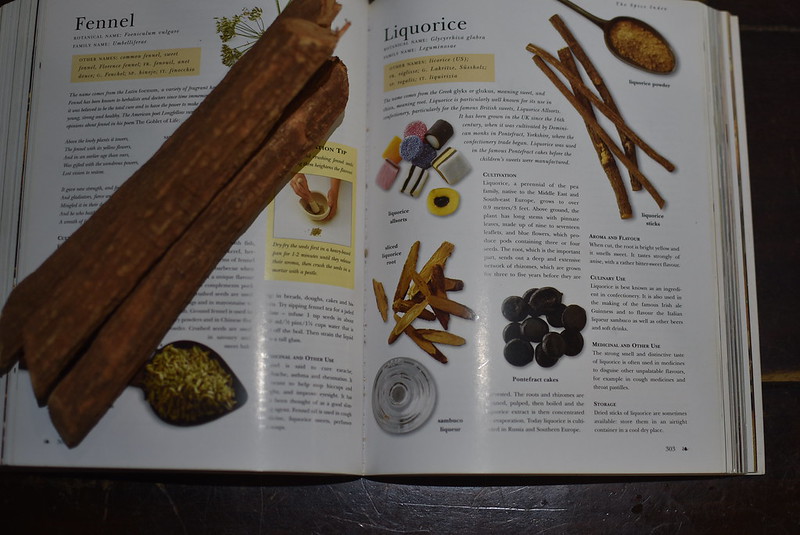
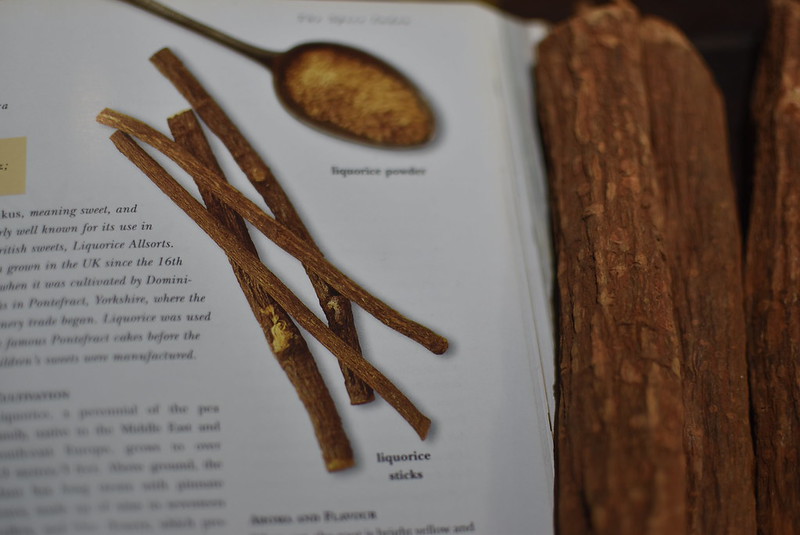
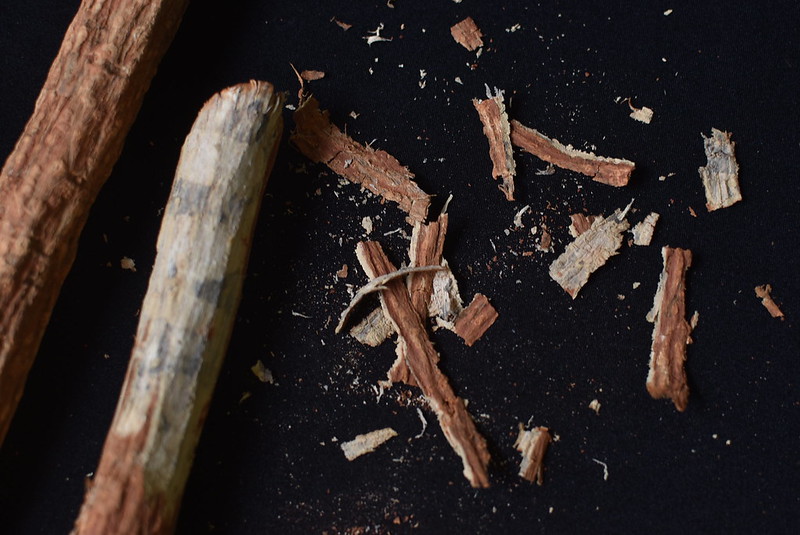
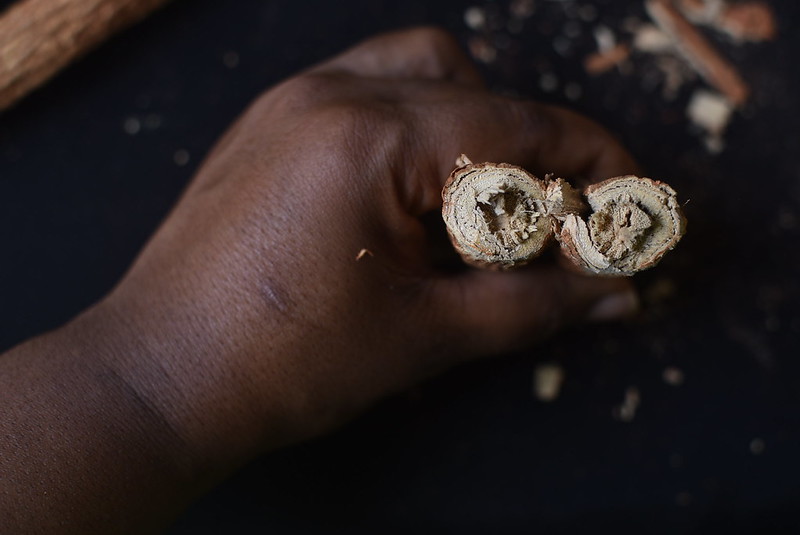
Leave a Reply